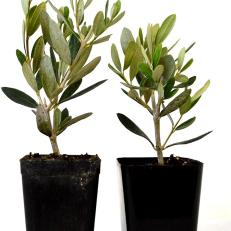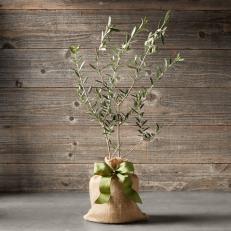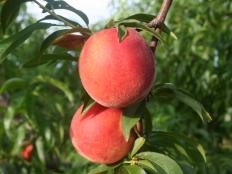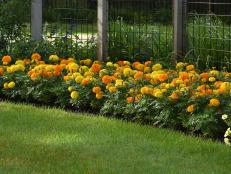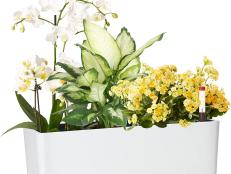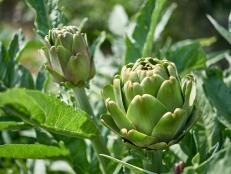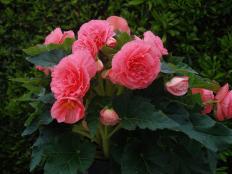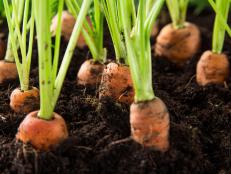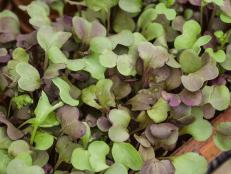Grow an Olive Tree
Grow an olive tree indoors and let it take summer vacations outdoors. If your climate is warm, you can even plant it in your garden.
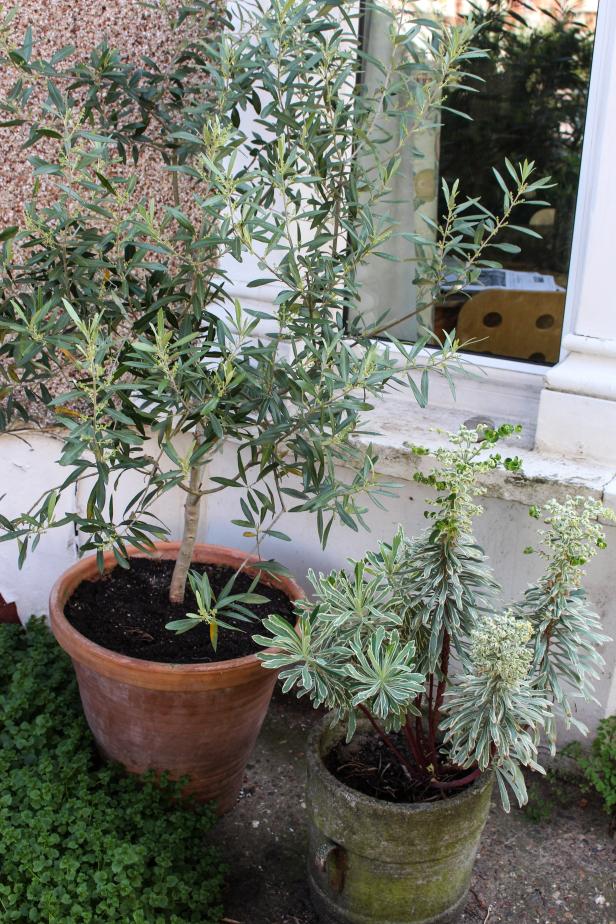
You can grow an olive tree indoors then move potted olives outside or plant them in the ground when the weather warms up. This olive tree is vacationing outdoors with a euphorbia.

Olive trees are ancient plants. Archeologists who have found olive pits and traces of olive oil in pottery shards estimate we’ve been cultivating them for 6,000 to 8,000 years.
Not all of us can grow these trees for fruit or oil. They’re hardy only in USDA zones 8 and warmer and start to die when temperatures hit the mid-teens. But we can enjoy olive trees (Olea europea) in containers indoors, at least for short periods of time. Because they don't thrive indoors over the long run, it's best to move potted olives outside or plant them in the ground when the weather warms up.
If you grow an olive as a houseplant, choose a dwarf variety. Dwarf olives can grow to 6 feet, but you can prune them to keep them shorter. Some gardeners prefer to grow these trees as bonsai.
Caring for Your Olive Tree Indoors
Choose a spot in your home that gets at least 6 hours of direct sun a day, such as a southern exposure. Avoid letting the leaves touch window glass, which can intensify the sunlight and burn them.
Prune the growing tips of your tree if it threatens to outgrow its space as a houseplant and to keep it bushy. If needed, prune out some branches to keep the tree open in the center so the foliage gets plenty of light and air.
Olive trees are native to the Mediterranean, so they can tolerate dry air. Most won’t need any additional humidity in your home.
Buy Olive Trees
Feed the tree once a month in fall and winter with a balanced houseplant fertilizer. When spring returns, start feeding twice a month, or switch to a timed-release fertilizer. Follow the product directions to know how much to use.
Indoor olive trees are susceptible to scale, so watch for signs of these sap-sucking insects. If needed, treat the tree by spraying with insecticidal soap.
Your tree probably won’t set fruit indoors. It needs a drop in daytime and nighttime temperatures, as well as about two months of temperatures below 50 degree F to stimulate flowering.
Planting Your Olive Tree in a Container
Use a large container with drainage holes. Fill it half-full with a good potting mix that drains easily or a sandy mix, such as a cactus potting soil.
If your tree is in a nursery container, turn it upside down and tap the bottom. Slide the tree out and gently separate the roots. Place the tree in the container and add more soil, planting it no deeper than it was growing in its original pot.
Leave about an inch between the soil and the rim of the container so you’ll have room to water. Use a saucer underneath the container to catch drips; sit the container on some bricks or blocks so the water can drain easily out of the holes.
Water thoroughly to settle the soil; when you can stick your finger about an inch deep into the pot and the soil feels dry, it's time water again. Olive trees grow slowly, especially in fall and winter, so avoid overwatering.
Olives are self-fertile, but if you decide to plant your tree outdoors, you’ll get a bigger harvest by planting another tree for cross-pollination.
Moving Your Indoor Olive Tree Outside
If you keep your tree as a houseplant, wait until all danger of frost has passed before moving it outside in spring. Help it acclimate by keeping it in a sheltered spot for the first few days and gradually expose it to more sunshine and wind. Keep checking to make sure the soil doesn’t dry out.
After 7 to 10 days, put your olive tree in full sun. It can vacation outside until frost. Before you bring it back in, reverse the acclimation process. Move it back into a partially shaded spot for a week to 10 days to help it adjust to the lower light levels in your home.
You’ll probably need to repot your olive after the first year, when the roots become crowded. Move it up one pot size at a a time. If it’s already in the largest container you want to use, top dress it instead with 2 to 3 inches of fresh potting mix.
Planting Olive Trees Outdoors
If you live and garden in Zone 8 or warmer, you can plant your olive tree outside. Give it a spot with full sun and, if needed, amend your soil with compost or other organic material to improve the drainage.
Dig a hole twice the diameter of your potted tree and as deep. Then follow the directions above for loosening the roots and planting.
When you water an outdoor olive tree, make sure the water doesn't run off. Use a soaker hose or drip irrigation, or form some soil into a rim around the planting hole to make a basin. The basin will help hold any rain or water from your hose so it sinks into the ground and reaches the roots.
When your outdoor tree starts to bloom in spring, feed it monthly with a balanced, granular fertilizer or a time-released fertilizer, following label directions.






